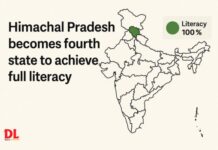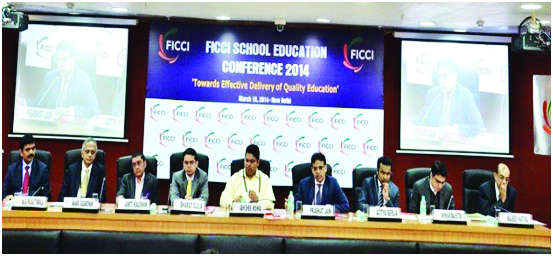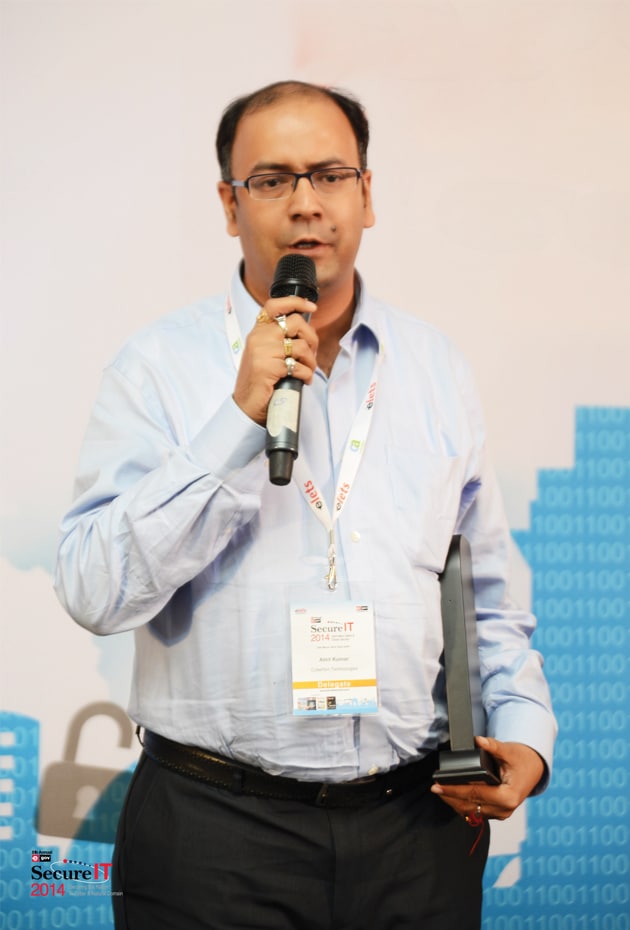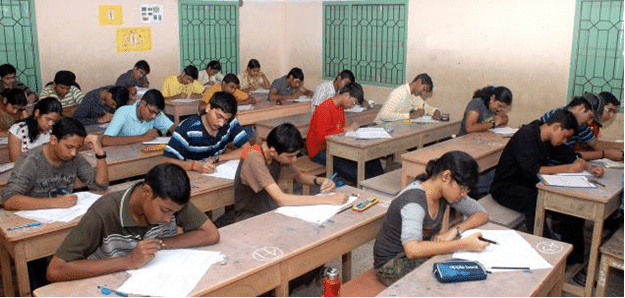The world is changing constantly, and fashion changes more than anything else. Gone are the days when fashion designing was considered as soft option for making a career or livelihood. The Indian fashion industry is evolving and so are the opportunities to make a career in it. After pursuing degree in fashion design, the students have a wide array of opportunities in the sector which is seeking a talented workforce. With the rising standard of living and awareness of designer clothes or stylish clothes in India, the demand of fashion designing professionals is certainly in rise. With plethora of career avenues in the domain of lifestyle, student with creative skills groomed correctly can get placed under various streams, depending on his/her interest and expertise. Roselin Kiro of Elets News Network (ENN) finds out what it takes to be in the fashion industry
Currently the domestic Indian Textile market is worth $25 billion and growing at an annual rate of 15-20 percent.

In today’s world, fashion designing is one of the most lucrative, appealing, glamorous and exciting career options. But people still have a misconception that it is something to do with glamorous women, clothes and parties. According to Arun John Lakra, Discipline Leader- Fashion Design, ITM Institute of Fashion, Design and Technology, “Designs being a very unconventional profession, people were wary about it till a few years back. But with globalisation, fashion or design has come a long way and has become a household word”. Like any other profession, this profession too calls for clearance of entrance exam, degrees to acquire and interviews to crack.
Importance of a degree in Fashion design
There are successful stories of people with a professional degree and without one. But it is always good to have a degree. People are realizing the importance of getting professional training before entering the trade. Fashion designing courses help students in identifying their strengths and weaknesses and prepare them for the fashion industry, not just creatively, but also by introducing them to its business end. Along with learning how to design clothes, niche subjects like fashion forecasting, fashion merchandising, pattern making & illustration, fashion marketing, fashion writing, and celebrity styling also come within its ambit, and are gaining popularity.
“Unfortunately some of the student see only the glamour part of the fashion designing which is quite misleading The fashion shows are the end product of lot of hardwork”
John Lakra,
Discipline Leader- Fashion Design,
ITM Institute of Fashion, Design and Technology
Gateway for fashion professionals
Fashion designing being an art-form, calls for individuals who have an artistic and creative bent. A budding fashion designer must be good at combining colours, tones and shades, in addition to being good at drawing and sketching. Meghna Ghai Puri, President, Whistling Woods International Says, “Apart from basic qualifications, one of the key aspects we look for in our candidates is passion for fashion and a desire to succeed. Apart from just academics, we look at what students have done with respect to extra-curricular activities. The school provides good exposure to students at an early stage.
Hence we need to ensure that the candidates we take will make the most of it and be great flag-bearers for the school in the long run”.

There are also professions like makeover artists which is again a creative, fun and glamorous job in the fashion industry. According to Aashmeen Munjaal, makeover expert and Director of Aashmeen Munjaal’s Star Salon’n Academy “Professionally, a makeover artist is someone who makes use of cosmetic techniques and processes for films, television, photography, theatre, fashion shows and other related productions. In its simplest form, makeup artistry enhances a person’s appearance, bringing out colour and features and hiding or smoothing out flaws, using cosmetic products. With a rapid growth in the entertainment, fashion, advertising, media and other related industries, the scope and growth of fashion makeover is exponential”
In addition to possessing creative skills, the students must also be good at communicating their ideas, both verbally and by drawing. A good fashion designing institute polishes the student’s communication skills, in addition to teaching designing. This career best suits the candidates who are open to learning and think out of the box.
The onset of the International fashion market in India has given an impetus to the fashion industry which has emerged as the booming industry and a career as a fashion designer is like a pot of gold. Many young people who are attracted by these attributes decide to foray into the fashion industry
Designers like Rohit Bal, Ritu Beri, Ritu Kumar, Satya Paul, Tarun Tahiliani, Sabyasachi etc have achieved global success and are inspiring youngsters to choose fashion designing as a career

According to a recent study, India’s fashion designing industry aims to grow to Rs 1000 crores from the current Rs 180 crores within the next five to ten years.

Career Oportunities
In the past decade, the world of fashion in India has changed dramatically. It has grown far beyond the art of just designing clothes. Students graduating from fashion designing institutes nowadays have a wide array of opportunities in the industry. These includes fashion designer, stylist, costume designers, fashion illustrators, fashion journalist, academicians and can also pursue to be textile designers and specialist.
One can become a celebrity stylist, a fashion editor or editorial stylist, a shop window designer, a fashion consultant for commercials, an apparel or accessory designer, a merchandiser, a fashion buyer and a retail expert or an entrepreneur who brings international fashion brands to India.
Sanyogeitaa Chadha, HoD-Fashion Design, Pearl Academy says,“At Pearl Academy we believe that students need to have a clear vision about their future, and honing their skills are our responsibility. We provide students with focused career related courses which empowers students to gain expertise in the field of their choice”.
At present, the fashion media industry is also booming in India. It is one of the most high paying sectors, and a big new opportunity in the country with so many fashion magazines around.
List of Institutes offering Fasion Designing Programmes
|
S. No.
|
Name of the Institute
|
City
|
Programme
|
Duration (in years)
|
Total Fees(in INR)
|
|
1
|
Ansal University
|
Gurgaon
|
B.Des-FT (Fashion and Textile)
B.Des-ID (Interior Design)
B.Des-VC (Product Design)
|
B.Des-FT -Four
B.Des-ID – Two
B.Des-VC -Four
|
B.Des-FT -11.4
Lakh
B.Des-ID – 1.14
Lakh
B.Des-VC -11.4
Lakh
|
|
2
|
Apeejay Institute of Design
|
Delhi
|
Bachelor of Design in Fashion
Design
|
Four
|
NA
|
|
3
|
Symbiosis Institute of
Design
|
Pune
|
Bachelor of Design
|
Four
|
280000
|
|
4
|
Vogue Institute of Fashion
Technology
|
Bangalore
|
Fashion and Apparel Designing
(B.Sc. FAD)
|
Three
|
NA
|
|
5
|
Northern India Institute of
Fashion Technology
|
Mohali
|
Bachelor of Science in Fashion
design
|
Three
|
NA
|
|
6
|
International Institute of
Fashion Design
|
Chandigarh
|
Fashion Designing
|
Four
|
110000
|
|
7
|
J.D. Institute of Fashion
Technology
|
Delhi
|
1. BSc in Fashion and Apparel
Design
2. Diploma in Fashion Design
|
1. BSc – Three
2. Diploma – One
|
NA
|
|
8
|
ITM – Institute of Fashion
Design and Technology
|
Mumbai
|
B.A. (Hons.) in Interior Design ( 3
yrs International Degree )
Diploma in Fashion Design
Diploma in Fashion Marketing
Diploma in Fashion Design
B. A. Interior Design
|
B.A. (Hons.) in Interior Design
– Three
Diploma in Fashion Design
– One
Diploma in Fashion Marketing
– Two
Diploma in Fashion Design
– Two
B. A. Interior Design – Three
|
NA
|
|
9
|
National Institute of Design
|
Ahmedabad
|
Master of Design Product Design
Master of Design Product Design
|
Master of Design Product
Design – Two and half
Master of Design Product
Design – Two and half
|
Master of Design
Product Design –
256000
Master of Design
Product Design –
250000
|
|
10
|
National Institute of
Fashion Technology
|
Delhi
|
B. Des. (Fashion Design)
|
Four
|
NA
|
|
11
|
Pearl Academy
|
Delhi
|
1. UG course
2. PG course
3. Diploma course in Fashion
Designing
|
UG course – four
PG course- two
Diploma course- 12 months
|
NA
|
|
12
|
Satyam Fashion Institute
|
Noida
|
1. B.Design Fashion Design, Lifestyle
Accessories, Textile Design
2. PG Diploma Fashion Design
3. Short term course- Interior
Design
|
1. B.Design – four
2. PG Diploma – Two
3. Short Term course – One
|
NA
|
|
13
|
Whistling Woods Neeta Lulla School of fashion
|
Mumbai
|
Diploma in Fashion
|
Two
|
NA
|
|
14
|
National Institute of Design
|
Gujarat
|
1. Graduate Diploma Programme
In Design (GDPD)
2. Post-Graduate Diploma
Programme In Design (PGDPD)
|
1. Four
2. two years six months
|
NA
|
 “India is now the centre of attraction and a platform for several international brands putting Indian consumers on global platform.The sector is seeking for talented workforce”
“India is now the centre of attraction and a platform for several international brands putting Indian consumers on global platform.The sector is seeking for talented workforce”
Meghna Ghai Puri,
President,
Whistling Woods International
 “We look for students who are passionate about their future and are not afraid to take the road not taken. In the fashion Industry it is important to have a positive attitude in addition to a desire to excel”.
“We look for students who are passionate about their future and are not afraid to take the road not taken. In the fashion Industry it is important to have a positive attitude in addition to a desire to excel”.
Sanyogeitaa Chadha,
HoD-Fashion Design,
Pearl Academy
Indian Market Scenario
Fashion designers should be aware of the fashion market requirements. Economically, India is progressing rapidly and today there are even better future prospects. Therefore the country is witnessing rapid growth in many sectors which also includes the fashion industry. The Indian fashion is also becoming popular abroad because of its cheap labour and excellent craftsmanship.
According to a recent study, India’s fashion designing industry aims to grow to `1000 crores from the current `180 crores within the next five to ten years.
The current market scenario of fashion industry is witnessing an aggressive and more robust approach from foreign brands to create distinction in the consumer market. Therefore the Indian designers need to explore these new opportunities.
Many individuals are turning up to choose careers in fashion designing today as there are many areas of work and countless opportunities within this field.
The way out
The Indian fashion industry is budding and still in its fledgling stage. Therefore the industry offers plenty of opportunities for the talented, hard working and enthusiastic people. A good understanding of the audience’s lifestyle and customers needs and requirement is what is needed in a skilled fashion designer. In this competitive profession it is the best of best who can ultimately survive. The designers need to have skills to express their ideas clearly and most importantly, they must be original and have fresh and innovative ideas.
However, a fashion designer needs to combine his creativity with managerial skills to sustain in the industry. Thus if one can create magic with colours, shapes and designs, then obtaining a professional course to begin a successful career in the alluring world of fashion designing is the way out for him.









































